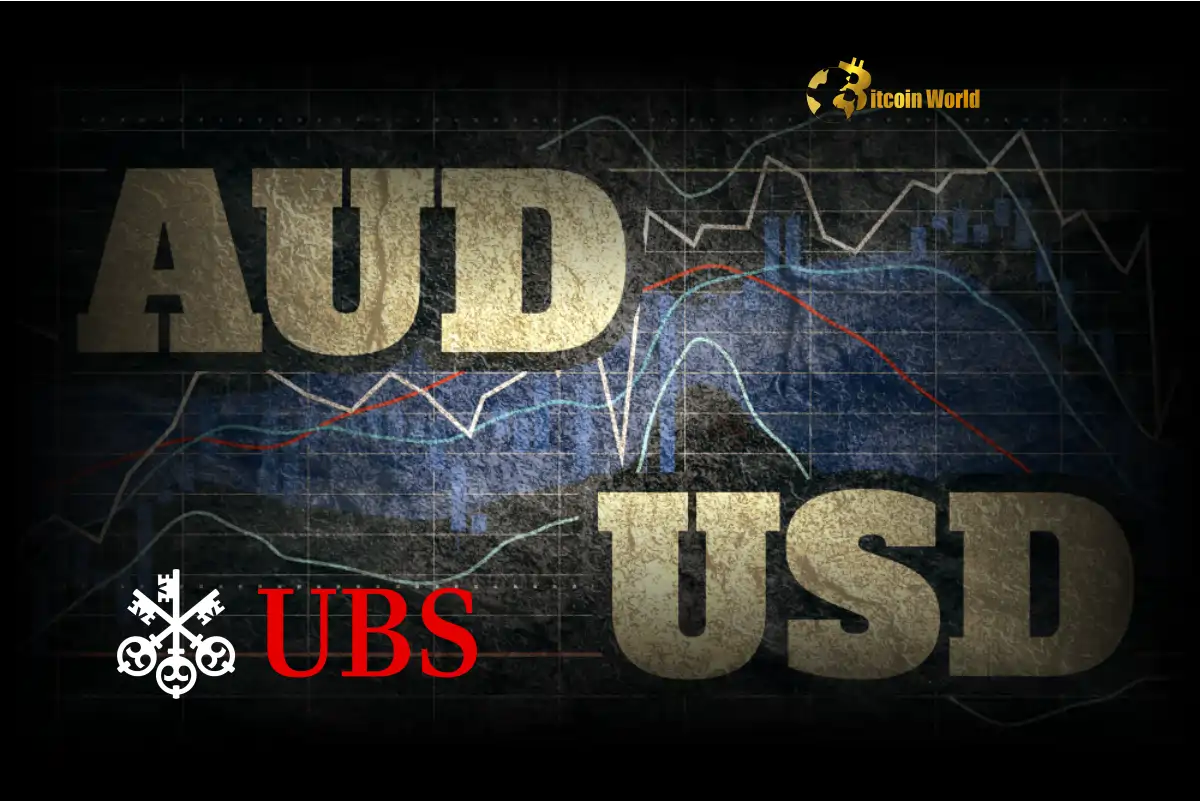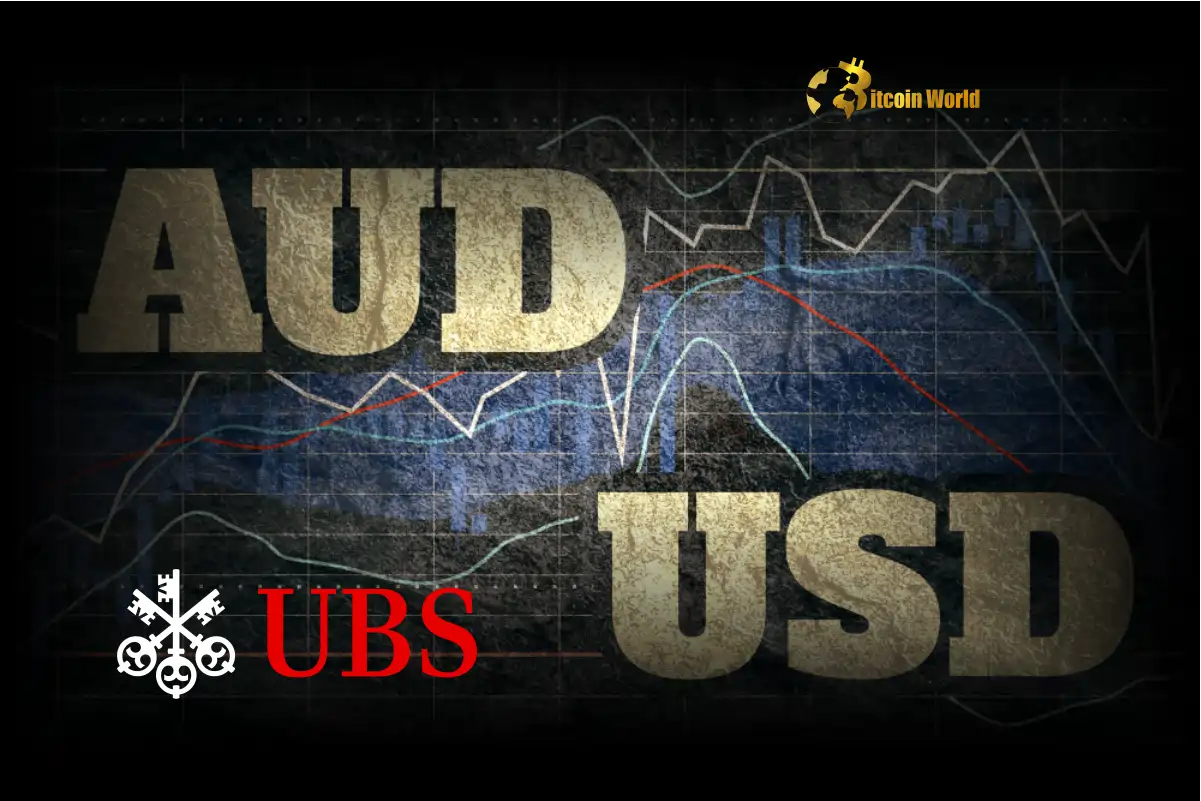BitcoinWorld

AUD/USD Plunges: RBA’s Dovish Shock and UBS Outlook Analysis
In the dynamic world of global finance, currency movements often ripple across markets, including the crypto space. Understanding shifts in major pairs like AUD/USD can provide valuable context for traders navigating volatility. Recently, the Australian Dollar (AUD) experienced a notable decline against the US Dollar (USD), a move significantly influenced by a perceived dovish turn from the Reserve Bank of Australia (RBA). This development has captured the attention of Forex market participants, prompting questions about the future direction of the pair.
Why Did the RBA Take a Dovish Turn?
Central banks like the RBA constantly evaluate economic conditions to set monetary policy, primarily interest rates. A ‘dovish’ stance suggests the central bank is leaning towards lower interest rates or is less inclined to raise them, often due to concerns about economic growth or inflation easing faster than expected. The recent RBA communication led markets to believe the central bank is now less likely to hike rates further and might even consider cuts sooner than previously anticipated.
Key factors contributing to this perceived shift include:
- Data indicating cooling inflation pressures.
- Signs of slowing economic activity or consumer spending.
- Global economic uncertainties impacting Australia.
- Comments from RBA officials signaling a less aggressive stance on tightening policy.
This pivot from a potentially more hawkish stance (favoring higher rates) to a dovish one typically makes a country’s currency less attractive to foreign investors seeking higher yields, leading to selling pressure on the AUD.
How Did This Impact AUD/USD?
Following the RBA’s communication, the AUD/USD currency pair saw a sharp decline. The Australian Dollar weakened considerably against the US Dollar as traders adjusted their expectations for future interest rate differentials between the two countries. A lower expected return on Australian assets (due to potentially lower interest rates) compared to US assets makes holding AUD less appealing relative to USD.
This reaction highlights the sensitivity of the Forex market to central bank rhetoric and policy expectations. Even subtle changes in language can trigger significant price movements as algorithmic trading and large financial institutions react swiftly.
Here’s a simplified look at the cause-and-effect:
| Event | Market Interpretation | Impact on AUD | Impact on AUD/USD |
|---|---|---|---|
| RBA communication perceived as dovish | Lower future interest rates expected in Australia | Less attractive for yield-seeking investors | Weakens (falls) |
What is the UBS Outlook Amidst the RBA Shift?
Interestingly, despite the immediate market reaction and the RBA’s dovish turn, the investment bank UBS has reportedly maintained its longer-term UBS outlook for the AUD/USD pair. This suggests that while acknowledging the short-term impact of the RBA’s stance, UBS analysts may be looking at other fundamental factors that they believe will support the AUD or weigh on the USD over a longer horizon.
Several reasons could explain why UBS is holding firm:
- Commodity Prices: Australia is a major exporter of commodities like iron ore and coal. Strong commodity prices can support the AUD, and UBS might anticipate continued strength here.
- Global Growth: An improving global economic outlook could benefit export-reliant economies like Australia, potentially boosting the AUD.
- US Dollar Factors: UBS might foresee factors that could weigh on the USD, such as a potential shift in the US Federal Reserve’s policy later on, or concerns about US economic growth relative to other regions.
- Valuation: They might view the current AUD/USD level as undervalued based on their long-term models.
Maintaining an outlook despite immediate negative news is common in financial analysis. It indicates a belief that short-term noise will eventually be overshadowed by stronger, underlying trends or valuations. Their analysis suggests they see resilience in the AUD or future weakness in the USD that the market is currently overlooking due to the RBA’s recent comments.
Navigating the Forex Market: What Does This Mean for Traders?
For anyone involved in the Forex market, understanding the interplay between central bank policy, economic data, and analyst outlooks is crucial. The AUD/USD situation provides a clear example of how central bank sentiment can cause immediate volatility, while major institutions like UBS may hold a different, longer-term perspective based on a broader set of economic indicators.
Key takeaways for traders:
- Central Bank Influence: Always pay close attention to central bank announcements and speeches. They are primary drivers of currency value.
- Data Dependency: Monetary policy is often data-dependent. Economic releases (inflation, employment, growth) can reinforce or contradict central bank guidance.
- Analyst Divergence: Be aware that different banks and analysts will have varying outlooks. Consider the factors driving their differing views.
- Risk Management: Volatility driven by news events requires careful risk management, including setting stop-losses.
This specific currency analysis of the AUD/USD pair highlights that short-term reactions can be significant, but long-term trends are influenced by a multitude of factors beyond just the latest central bank statement.
Challenges and Considerations
While UBS maintains its outlook, there are inherent challenges and considerations:
- Uncertainty in RBA Policy: The RBA’s future path is not set in stone. Economic data could shift, leading them to change their stance again.
- Global Economic Headwinds: Unexpected global events (geopolitical issues, energy price shocks) could impact both the AUD and USD in unpredictable ways.
- Execution Risk: Even if the long-term outlook is correct, timing the market can be difficult. Short-term volatility can lead to losses before the predicted move occurs.
Therefore, while a UBS outlook provides a potential roadmap, it’s essential to combine it with ongoing market analysis and risk management strategies.
Conclusion: What Lies Ahead for AUD/USD?
The recent fall in AUD/USD, triggered by the RBA’s perceived dovish turn, underscores the significant impact of monetary policy expectations on currency valuations. While the immediate reaction was negative for the Australian Dollar, the fact that institutions like UBS are maintaining a more positive long-term UBS outlook suggests that the story for this pair is far from over. The coming months will likely see traders weighing the ongoing implications of RBA policy against broader economic trends, commodity prices, and the trajectory of the US Dollar. Navigating the Forex market requires constant vigilance and a willingness to consider multiple perspectives in your currency analysis.
To learn more about the latest Forex market trends, explore our articles on key developments shaping global currency pairs and interest rates.
This post AUD/USD Plunges: RBA’s Dovish Shock and UBS Outlook Analysis first appeared on BitcoinWorld and is written by Editorial Team





